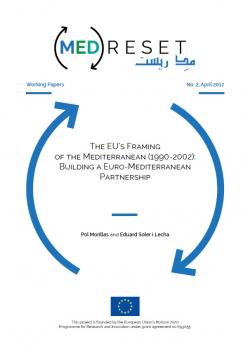The EU's Framing of the Mediterranean (1990-2002): Building a Euro-Mediterranean Partnership
This paper looks into what was a defining phase for Euro-Mediterranean relations. In the 1990s the Mediterranean was presented as a source of threat, but also as a need for engagement due to proximity and interdependence. The Mediterranean was also seen as an opportunity and a responsibility. Through its engagement with the Mediterranean the EU emphasized its identity as a transformative actor, linking trade liberalization and political transformation. This contributed to a gradual de-politicization and, above all, the technocratization of Euro-Mediterranean practice. Another constant feature of this period was securitization, particularly after the attacks of September 11. The seeds of existing debates on how the EU should deal with its Southern Neighbourhood were planted in this period. By looking at the institutional, political and intellectual debates of the 1990s, we can trace back some of the conceptualizations that still shape the European vision of the Mediterranean but also of itself.
-
Details
Roma, IAI, April 2017, 29 p. -
In:
-
Issue
Working Paper 2
Introduction
1. The EU’s Construction of the Mediterranean
2. The EU’s Description of the Self
3. Drawing the Boundaries of the Mediterranean
4. The EMP in Practice and Its Three Big Debates
5. The Early 2000s: A Re-Securitized Approach
Conclusions
References



